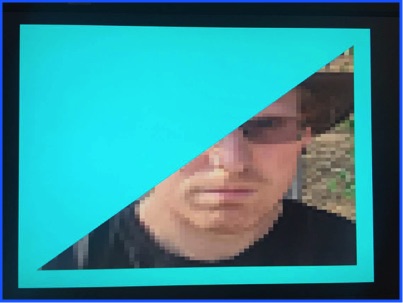Chapter 11: THIRD TRIANGLE!!1!
Maybe its time to try a new primitive...
Disclaimer: I do not work for Sony. Despite the disturbing percentage of my shirts, jackets, and bookbags that are PlayStation dev-related, I have never worked for Sony. I do, however, have many friends that work at Sony, some of which I hope will call off the corporate lawyers. JayStation is in no way associated with Sony or PlayStation, and any stupid things I say represent only my own ineptitude and silliness.
This is a bittersweet post for me to write. At the end of August I will be temporarily pausing my eight year Japanese adventure and returning to the States for personal reasons, making this the last JayStation blog update from beautiful Kyoto, Japan. As part of the moving process, I am selling my only computer tomorrow, giving me just 24 hours to bang out this post before I no longer have any means of doing so. It won’t be as in depth or interesting as I had hoped, and it will probably be rushed and error-riddled with unclear wording, but it will show everything you need to know to render textured triangles. The next update probably won’t come until September or October when I settle in, unless of course I am murdered in the street for riding my bike to work. #America
There are three steps to getting textured polygons rendering. First you set up your vert data in memory, including two varyings for the normalized S and T texture coordinates. Next you set up between 1 and 4 uniforms, corresponding to texture config parameters 0 through 3. Finally you write a fragment shader that does interpolation for the ST coordinate varyings, and reads the texture data. The first step, setting up verts and varyings, was covered in the previous post, so it won’t be duplicated here.
I Just Love a Config In Uniform
Texture config params are shader uniforms that are used to specify things like base address, dimensions, pixel format, mip levels, min/mag filters, and wrap mode for texture unit memory accesses. They roughly correspond to some combination of T#’s and samplers on GCN. The number of config params needed is dictated by the type of data being accessed, with one word required for 1D buffers and general memory accesses, two words for 2D textures, and three or four words for cubemaps and child images.
No matter the type of data, you must at least specify config param 0. Bits [31:12] give the base address of the LOD0 image in units of 4 KiB blocks, so all images must be at least 4 KiB aligned. Bits [11:10] give the cache swizzle mode, and will be discussed in depth in a later post. Bits [7..4] are the four LSB bits of the 5-bit pixel format value, and [3..0] give the number of mip levels minus one.
